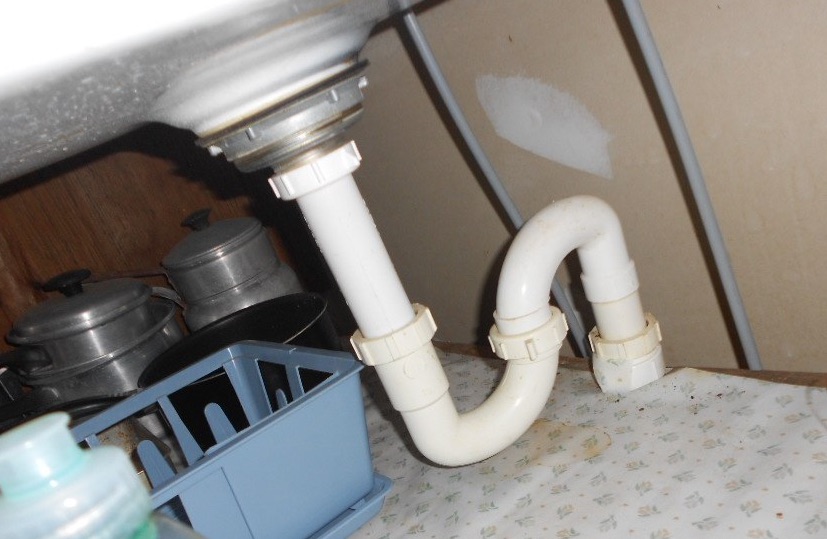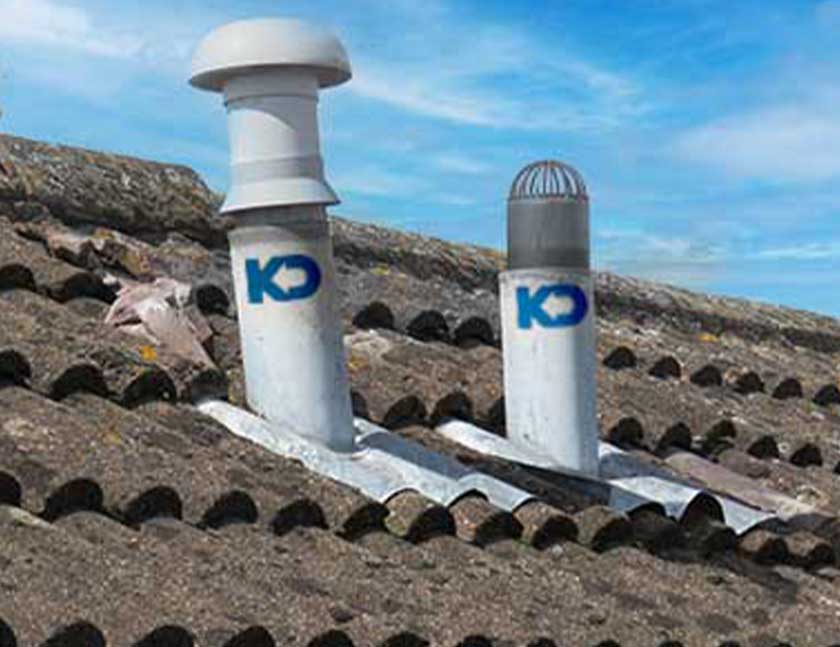The Importance of Ventilation in Residential Plumbing Systems
The Importance of Ventilation in Residential Plumbing Systems
Blog Article
Any individual seems to have their own individual way of thinking in relation to What Is A Plumbing Vent & How Do They Work?.

Proper ventilation in pipes systems is frequently ignored, yet it is vital for maintaining the functionality and safety of your home's plumbing. Air flow assists manage atmospheric pressure, avoid the buildup of harmful gases, and make sure the efficient elimination of waste. In this guide, we will certainly explore the value of proper pipes ventilation, exactly how it functions, and the benefits it gives your plumbing system.
Just How Ventilation Works in Plumbing Equipments
Atmospheric Pressure Law
Appropriate air flow maintains balanced air pressure within the plumbing system. When water moves with pipes, it displaces air. Without appropriate air flow, this displacement can develop unfavorable stress, bring about reduce drains or siphoning of water from catches, which can trigger unpleasant smells to permeate into the home.
Avoiding Sewage System Gas Buildup
Among the most critical functions of plumbing vents is to avoid sewage system gases, such as methane and hydrogen sulfide, from accumulating within the home. These gases can position serious health and wellness threats and are extremely combustible. Vent pipes enable these gases to get away safely outside.
Aiding in Waste Removal
Air flow assists in the reliable elimination of wastewater by protecting against airlocks in the drain system. When air can stream freely via the vents, it enables water and waste to flow efficiently through the pipelines, lowering the danger of clogs and back-ups.
Benefits of Correct Air Flow
Enhanced System Efficiency
Effectively aerated pipes systems operate more efficiently, with less blockages, faster draining, and much less stress on the pipelines. This efficiency expands the life expectancy of the pipes system.
Improved Air Quality
By protecting against sewer gases from entering your home, correct air flow contributes to far better indoor air quality, making your living setting healthier and extra comfortable.
Stopping Water Damages
Ample ventilation helps protect against water from being siphoned out of traps, which can lead to drain gases going into the home and creating water damages in time.
Steps to Guarantee Proper Ventilation
Consulting Pipes Codes
Always speak with regional plumbing codes when designing or changing your plumbing system. These codes provide the essential guidelines for correct venting and guarantee your system fulfills security criteria.
Normal Examination and Upkeep
Regular examinations can assist determine prospective air flow concerns before they come to be major troubles. Upkeep jobs, such as cleaning up air vent pipelines and checking for obstructions, are crucial for keeping the system in good working order.
Professional Installation
For new setups or significant alterations, it's important to work with an expert plumbing professional. They have the knowledge to guarantee the ventilation system is correctly designed and set up according to code.
Understanding Ventilation in Pipes
Air flow in plumbing refers to the network of pipes that enable air to flow through the drainage system. These vents offer several purposes, including controling atmospheric pressure within the pipelines, avoiding sewer gases from entering the home, and helping in the smooth circulation of wastewater.
Kinds Of Plumbing Vents
Key Heap Vent
The primary stack air vent, likewise known as the air vent pile, is the main air vent in a pipes system. It prolongs from the major drain line up with the roof, permitting gases to run away and fresh air to enter the system.
Branch Vent
Branch vents attach to the main pile air vent and offer specific fixtures, such as sinks, bathrooms, and showers. These vents make sure that each component has ample air flow to function effectively.
Air Admission Shutoff (AAV).
An Air Admission Shutoff (AAV) is a one-way shutoff that enables air to get in the pipes system without the demand for a typical air vent pipeline expanding via the roofing. AAVs are typically used in remodellings or areas where mounting a basic air vent is impractical.
Indications of Poor Air Flow in Pipes.
Slow Draining Fixtures.
If your sinks, tubs, or toilets are draining pipes gradually, it could be a sign of bad ventilation. Insufficient air circulation can produce a vacuum result, making it tough for water to drain effectively.
Gurgling Sounds.
Gurgling noises originating from drains are commonly a result of air being sucked via water catches due to negative pressure in the pipes. This is a clear indication of not enough ventilation.
Unpleasant Smells.
Sewage system smells inside your home are a red flag that your plumbing system is not correctly ventilated. This might suggest that sewer gases are not being sufficiently aired vent outside, resulting in potentially hazardous conditions.
Usual Air Flow Blunders.
Insufficient Vent Sizing.
Making use of undersized vent pipes can result in bad air circulation and stress imbalances in the system. It's vital to make use of vents that meet the particular demands of your plumbing system.
Improper Vent Placement.
Placing vents also far from the components they serve can decrease their effectiveness. Correct placement ensures that air can move easily and efficiently with the system.
Ignoring Code Demands.
Building ordinance supply particular standards for pipes ventilation. Neglecting these codes can cause a system that fails to work appropriately and might lead to costly repair services or carcinogen.
Verdict.
Appropriate air flow is a critical part of any plumbing system, ensuring that it works efficiently and securely. By understanding the importance of air flow, acknowledging the indicators of bad air flow, and taking steps to preserve your system, you can prevent expensive concerns and protect your home's air quality.
4 Things You Should Know About Your Plumbing Vents
What Plumbing Vents Are
Also called a vent stack, a plumbing vent is a vertical pipe attached to your drain line that runs through your roof. The plumbing vent pipe, or plumbing air vent, removes gas and odors from your plumbing system and allows fresh air to enter the pipes, helping the water to flow out of the drain pipes.
What Plumbing Vents Do
Plumbing vents have two basic functions. One of which is to allow unpleasant smelling wastewater and sewer gasses to escape your plumbing system instead of entering your home. Plumbing vent pipes are typically located on roofs, away from windows, to ensure the fumes exit the home completely.
The other function of the plumbing vent is to move fresh air into your plumbing system. This helps move water through every plumbing fixture in your house, like toilets and sink drains. Think of the way in which you need to let a little air into the bottle as you pour soda in order to make the drink flow smoothly.
Different Types of Plumbing Vents
True vent: This is the most common vent option. In simplest terms, a true vent is a vertical pipe attached to your drain line that exits through the roof. They often function as the main vent that other fixtures can connect to. Re-vent pipe or auxiliary vent: Attached to the drain line near specific plumbing fixtures, re-vent pipes run up and over to connect to the main vent. Common vent: Two plumbing fixtures installed on opposite sides of a wall are typically tied into the vent stack using something known as a sanitary cross. Wet vent: This venting option operates as a drain pipe and a vent at the same time. Wet vent drainage systems drain water from one fixture while venting the air from another. Although they’ve been used for over 100 years, wet vent systems have only recently been added to the plumbing code in many areas. If you’re planning on installing one in a bathroom remodel, make sure you check your local code prior to construction. Loop vent: For free-standing fixtures like kitchen island sinks, loop vents are ideal. These vent pipes run under the floor, rise from the P-trap, and create a loop inside the cabinet sink. Air admittance valve: An AAV is a one-way mechanical valve typically installed at the site of the plumbing fixture. AAVs allow venting to occur without having to tie into a larger venting system. They’re ideal for venting fixtures where you aren’t able to easily connect to an existing vent system. Common Plumbing Vent Issues
Although vent pipes typically don’t have water flowing through them, they’re still subject to many typical plumbing issues. For example, clogs are one of the most common problems associated with sewer vent pipes. If your vent pipe gets clogged, all of your plumbing fixtures tied into the vent stack will be affected.
A sink with a slow drain that bubbles and gurgles or a strong sewage smell around your toilet are both indicators that your toilet vent pipe is clogged. Because most vent pipes exit through the roof, old leaves, twigs or even a bird’s nest could be clogging the pipe.
Clogs in your vent pipe system cause a buildup of negative pressure, meaning that water won’t be able to flow out of your home very well. It’s similar to putting your finger over the opening of a straw to trap water inside. When you remove your finger, the water is able to flow out of the straw.
If you suspect you have any blockage in your vent, make sure you have a professional come examine the situation. Left unchecked, a blocked air vent can lead to other costly repairs, like leaks and sediment buildup.
Under Pressure
Pipe vents are essential aspects of a home’s plumbing system. Owning a home means learning about all sorts of things you never put much thought into before. But by understanding as much as you can about the important systems of your home, you can keep those budgets intact and those anxiety levels low.
https://www.homeserve.com/en-us/blog/home-improvement/plumbing-vents/

Do you like more info about What Are Plumbing Vents and Why Are They Important?? Post a review below. We will be happy to find out your opinion about this blog posting. We are looking forward that you visit us again soon. Those who enjoyed reading our post kindly be sure to pass it around. Thank you for your time. Come back soon.
Click Here Report this page